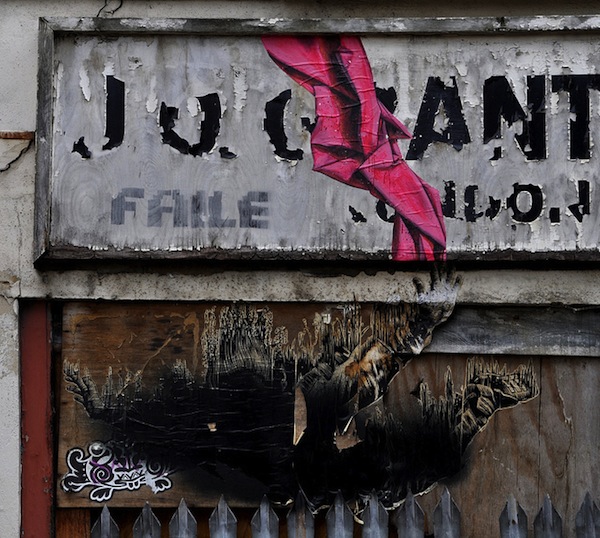
With Specter‘s recent solo show at Pure Evil Gallery, I thought it would be the perfect time to ask Specter a few questions.
RJ: You were just in London (or are you still there) for your solo show at Pure Evil. What do you think of the city?
Specter: London has a vibrant energy to it. I only got to see a small chunk of the city but have nothing but good things to say about it and the people. Pure Evil was a great host.
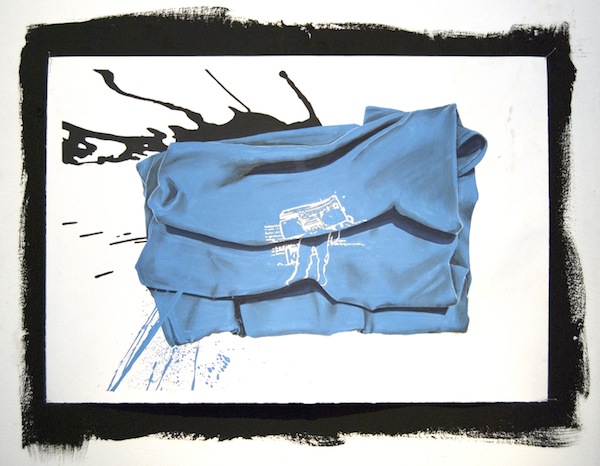
RJ: The work at your solo show is part of a new series. Can you explain the series and how it came about?
Specter: The series is based on people who personally influenced me artistically. Instead of painting the subject’s face I decided to paint a garment that tells a story about them.
RJ: On the whole, your street art is more conceptual than that of most street artists. Have you found it challenging to execute and be appreciated for conceptual street art when so much popular street art is, at one level, very graphic and literal? How have people reacted to pieces like your ready-mades?
Specter: I don’t think about it often, but whenever you work outside the framework people have trouble grasping it. I transition between painting and sculpture often and rarely sign my pieces, so it’s sometimes hard for enthusiasts to recognize my work. With hand drawing, painting and constructing everything I put out and commonly taking weeks to find the right spot I get less coverage than your average poster or stencil artist.
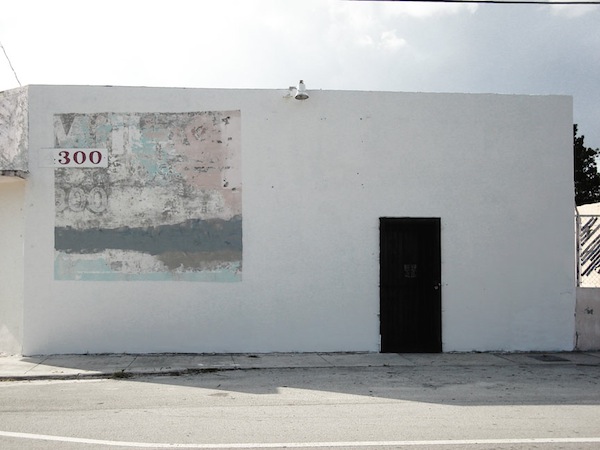
RJ: Why do you work outside, and how does your street art connect to your gallery art?
Specter: I work outside because it is all I know and love. I was introduced to art through graffiti and have been working on the streets for over fifteen years. It is my strongest passion and I take it very seriously. I try to be very honest with the street because the street knows when you’re faking. Showing in galleries requires a new approach to one’s work, and it’s a choice I’m happy I made. Adapting concepts to an indoor and controlled environment can be a challenge and you’re also starting from a blank canvass. The transition from the street to the gallery doesn’t work for a lot of artists but for me I feel it is just another venue to express concepts.
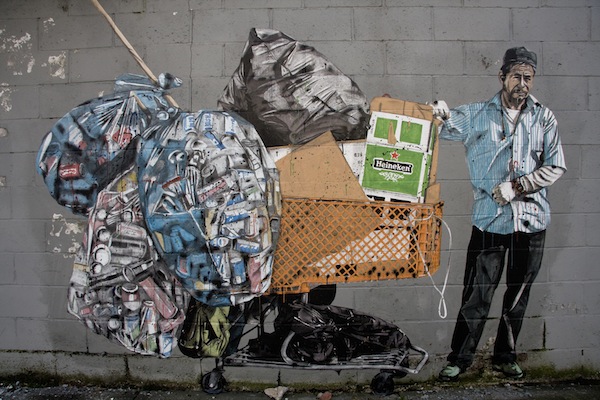
RJ: Earlier this year, you took on the issue of gentrification in Brooklyn, and you have consistently depicted homeless people in your art. On the one hand, you’re raising awareness of these issues, but on the other hand, street art is bringing about gentrification. How do you deal with this apparent contradiction? Do you think that your art has had a positive impact in the communities you’re working in?
Specter: I don’t believe those contradictions apply. I put up work where I want to. The neighborhoods are chosen because they are beautiful and the people appreciate and empathize with the subject matter.
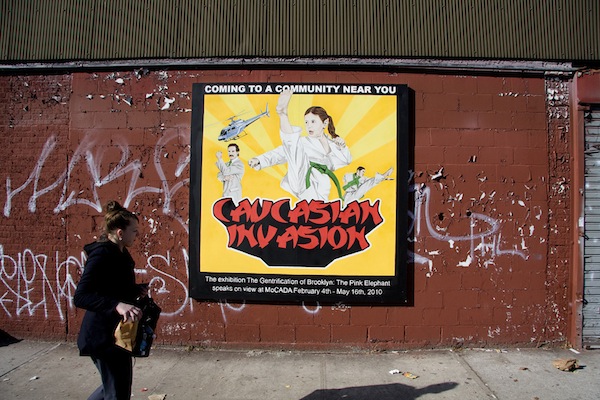
RJ: What do you hope to accomplish through your art?
Specter: To get people talking.
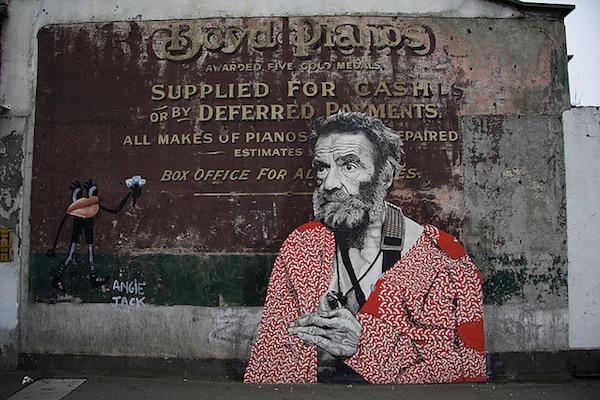
RJ: One particular street piece that you did in London has turned out to be pretty controversial. At first, people generally seemed to love it, but then it was pointed out that you had partially covered an old hand-painted sign. I guess I’d like to hear your thoughts on why you put the piece there and give you a chance to respond to the negative things that people have been saying about it.
Specter: At its essence graffiti and street art is both the work by the artist and the public space in which it is put up. As an artist every wall in the public sphere is fair game. I go to great lengths scouting locations for my work and often look for hand-painted signs and walls to revive in the collective eye with my hand-painted installations. I have absolutely no remorse for any placement of my work.
I choose that spot for a reason. I like to involve my pieces in a dialogue with their surroundings. The art is not just my painting it is the entire environment, the interaction of all parts.
I identify very strongly with these old signs and feel that my additions are just part of the evolving cycle of their lives. My incorporations are changes to their ephemeral existence, often highlighting their under appreciated being.
RJ: Where do you see yourself in five years?
Specter: Making art on a beach in Mexico.
Photos by Specter, Pure Evil and Nolionsinengland
